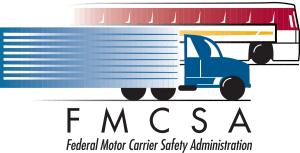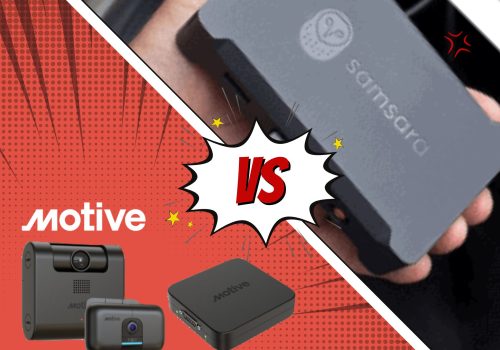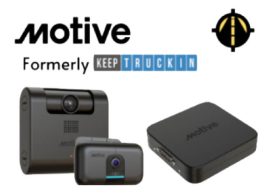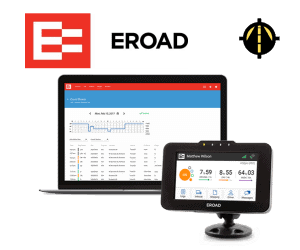The ELD mandate is here. By now, you have probably heard of the ELD mandate. But do you understand what it means?
If not, don’t worry. We’re here to explain it all to you and help you find the right ELD for your business.
We know what it’s like to be confused by all of the legal jargon out there. That’s why we’ve broken down the ELD mandates and answered all your questions about what they mean for you and your business.
You might find yourself asking: What are ELDSs? Why did this federal law come about? What does it mean for me and my company? How do I implement them?
Well, we’ve got answers! The ELD Mandates became enforceable on December 18, 2017, so if you haven’t already implemented them in your fleet, now is the time to do so.
Summary
- Electronic Logbook Mandate Update
- What Exactly is the ELD Mandate?
- What Are Hours-of-Services?
- Benefits of ELD mandate
- ELD mandate is Reducing Paper Burden
- Who Does It Affect?
- Exempted Drivers from ELD Mandate
- Requirements of Approved ELD
- Requirements of the ELD Mandate: What does it Do? What Types Are There?
- AOBRD VS ELDS
- Additional Differences
- So, What’s the Point of the Mandate?
- HOW THE ELECTRONIC LOGBOOK MANDATE CAN WORK FOR DRIVERS?
- HOW THE ELECTRONIC LOGBOOK MANDATE CAN WORK FOR FLEETS
- EXEMPTIONS
- START TODAY
- Closing Argument: The ELD Mandate and You
- Final Take Away
Electronic Logbook Mandate Update
According to the most recent ELD mandate news fmcsa has built upon the previous rule. The Moving Ahead for Progress in the 21st Century (MAP-21) bill was enacted in 2012 and included a provision requiring the Federal Motor Carrier Safety Administration to develop rules for the use of Electronic Logging Devices (ELDs).
The Federal Motor Carrier Safety Administration (FMCSA) has been working to improve highway safety for motor carriers since January 1, 2000. What can you expect from the FMCSA in 2022?
The ELD rule deadline was December 18, 2017. Since then, there have been updates and changes made to the rule. Here are some of the things that have changed since the implementation of ELDs:
- One of the most significant updates is that ELDs must now be compliant with “Subpart B” of the Federal Motor Carrier Safety Regulations (FMCSRs). This standard covers technical specifications for data transfer and design. Truckers can expect even better interoperability between ELDs and motor carriers. This ensures that data transfer is reliable and quick.
- In the Federal Motor Carrier Safety Administration’s (FMCSA) “Strategic Plan for Fiscal Years 2021-2023,” the agency outlines two major goals: improve data collection and analysis techniques and expand initiatives that promote safety and risk management for the trucking industry. The agency states that it will continue to collect data on driver fatigue and develop new standards for managing driver fatigue, in part by expanding the North American Fatigue Management Program (NAFMP), which includes components to reduce driver fatigue and improve driver health and safety.
- The FMCSA plans to do the Large Truck Crash Causal Factors Study between 2021 and 2023. This will provide information on how technology and driving habits can help prevent crashes.
What Exactly is the ELD Mandate?
Many truck drivers are looking to find out more information about the looming ELD mandate. However, the ELD final rule is straightforward to read. Unlike your favorite novel, it is actually a 516 page long document.
It’s not as engaging or nearly as exciting, but it is essential. In this article, we will try to break it down piece by piece.
For starters, let’s talk about what the ELD mandate is.
The Federal Motor Carrier Safety Administration (also called the FMCSA) created and enacted the ELD mandate in December of 2015. The ELD mandates came after a prolonged period of waiting. And the ELD Mandate is also called the Electronic Logging Device Rule.
The ELDmandate logbook regulation was created to address concerns over Hours of Operations.Furthermore, it mandates electronic devices to be used to record a driver’s Record of Duty Status (or RODS).
In its most basic explanation, the ELD mandate is simply mimicking existing requirements into electronic format. Many commercial trucking companies resist the change. Many companies were not honest and/or accurate in recording their record of duty status.
What Are Hours-of-Services?
Many drivers use a paper log to record their compliance with hours of service requirements (also called HOS). However, the electronic Record of Duty Status replaces the paper logbook.
The HOS requirements are a permanent record of driving hours, on-duty hours, and rest time throughout a driver’s trip.
Benefits of ELD mandate
Many people are asking if the ELD mandate is a necessary law. There are many reasons for enacting the mandate. However, the primary reason is driver fatigue.
It’s no secret that long-distance, extended driving for commercial purposes is physically exhausting, and exhausted drivers are statistically more likely to cause accidents.
Awareness of this problem led to the restriction on driver hours. Hence, the requirement to keep a log that documents that driving hours are not exceeded.
ELD mandate is Reducing Paper Burden
Keeping paper logbooks can be wildly inaccurate due to miscalculations by drivers and pressure from employers to possibly manipulate hours. The electronic logging data mandate solves this by requiring electronic loggers to replace paper logs with electronic recording automatically performed to ensure accuracy. And this can help keep an accurate record and help combat fatigue, and potentially destructive accidents.
Who Does It Affect?
The ELD Mandate became law on February 16, 2016. The compliance date was delayed a few times. But, finally, the mandate went into effect on Dec 18, 2017. Soon after that date, all drivers must use ELDs.
First and foremost, the ELD mandates affect interstate commercial motor vehicle drivers. Currently, interstate drivers are required to log their RODS. Interstate drivers affected by the mandate are:
- Operate vehicles that weigh more than 10,001 pounds.
- Vehicles with placarded hazmat loads.
- Vehicles carrying more than 8 or 15 passengers (depending on the vehicle class).
In summary, every driver that was previously using a paper log would be affected by the ELD mandate.
Exempted Drivers from ELD Mandate
ELD mandate exemptions are;
- Drivers who operate within a 100-air mile radius are included in the eld exemption 100 mile.
- Non-commercial license driver who operates within a 150-air-mile radius, driveaway, and tow away operators.
- What year truck is exempt from ELD? Vehicles manufactured before the model year 2000. This truck has ELD exemption engine
To put it simply, the mandate applies to all commercial drivers. THE FCMSCA estimates that the ELD mandates will impact over 3.4 million drivers.
Requirements of Approved ELD
For example,
- They’re all supposed to be able to connect to a truck’s engine to track when it is in motion.
- They can enable the driver to log in and pick among a few options, such as “on duty,” “off duty,” and “on-duty and not driving.”
- They can also display a record of duty status so the driver can quickly glance at the hours he or she has driven in that day
Requirements of the ELD Mandate: What does it Do? What Types Are There?
As we’ve discussed, the ELD mandates mainly require commercial drivers who travel long distances for extended periods to track their hours of service with electronic logging devices. And, thus saving them potential discrepancies that paper logging could cause.
All approved ELD vendors are registered on the FMCSA website. Electronic logging devices range from simple, recording devices to more complicated machinery, but overall, electronic logging devices are supposed to be able to do similar things.
Most ELD manufacturers provide data in standardized formats. And the data is transmitted to law enforcement in multiple ways. For example, wireless web services, USB, or even Bluetooth.
AOBRD VS ELDS
The ELD and AOBRD are accomplishing the same task. However, there are distinct differences between them. For example, the term Automatic on Board Recording Devices is often used interchangeably with ELD Devices, though, they’re not the same thing.
The FMCSA eld/aobrd mandate uses the term AOBRD to describe an electric device that meets the HOS requirements. Those requirements are the same as the previous paper logbook requirements.
Further, an Electronic Onboard Recorder is a device that stores electronic logging applications. Although it sounds like an ELD, when compared to an Eld’s proper definition, you can see the glaring differences.
Additional Differences
According to the FMCSA, an ELD is Electronic Logging Device. This term is describing systems that are not an integral part of the truck.
These devices will sync with the engine of a truck not only to track driven miles and engine hours but also, motion and power status of the truck.The most significant difference? AOBRDs and EOBRs don’t track these things.
There are all types of ELDs that can be used, even on your cell phone or other wireless devices. However, the FMCSA website does not provide specific ELD models. Moreover, the website does provide a list of approved ELD manufactures.
The quickest way to decide on approved ELD devices is to review the ELD Devices Comparison Checklist.
So, What’s the Point of the Mandate?
The Electronic logging device mandate is expected to save the commercial trucking industry time and money. Through research, the FMCSA estimated that the average truck driver fills out about 240 RODS per year.
In a perfect world, the FMCSA hopes that the mandate will provide industry wide-benefits. One of the most notable benefits is lower truck downtime. Also, it hopes to increase safety among fleet management teams.
The FMCSA has found that drivers that use ELDs will have lower crash rates. Further, by monitoring their hours and operating logs drivers will lower their total crash rate by 11.7 percent. And also, the preventable crash rate has decreased by 5.1 percent.
As an added bonus, the FMCSA ELD mandate law is hoping to reduce fuel costs, too. And as an added benefit, fleet owners can boost fuel efficiency.
HOW THE ELECTRONIC LOGBOOK MANDATE CAN WORK FOR DRIVERS?
The ELD changes provide clear and concise records for an inspecting officer to see, leading to expedited inspections. And also, coupled with less paperwork, the ELD mandate rules get drivers back on the road faster, which is where they would prefer to be.
Likewise, ELDs devices reduce CSA scores and fines because they are more accurately record drive times and locations. Though everyone makes mistakes, paper is the perfect place to highlight them. Incorrect records add up, and those mistakes cost drivers a lot of money.
However, with eld mandate benefits, fewer corrections need to be made later, which is less information that a driver has to remember.
Drivers remain more HOS compliant with time-sensitive warnings alerts when running out of driving hours. The eld mandate hos are programmed to remind a driver while there’s still time to pull over somewhere safe.
Also, because ELD devices record all of this performance, drivers have more responsible data to add to their resume, making them a more marketable candidates for their next job interview. And with data to back it up, they can demand higher pay or increased incentive payouts.
ELDs also help document driver safety in the event of an accident as well. The device captures driver behavior immediately preceding the incident so that they have a simple way to reconstruct accidents and defend against lawsuits, thus reducing their liability.
The ELD device can also provide better roadside assistance because the exact location of the driver and the condition of the vehicle is known.
HOW THE ELECTRONIC LOGBOOK MANDATE CAN WORK FOR FLEETS
There are many ELD mandate benefits. It can help you improve efficiencies with your fleet. They improve safety, reduce costs, connect you with your drivers, and help you keep a competitive edge.
An ELD mandate device help to improve safety because they enforce hours of service regulations. And this keeps tired drivers off the road, increasing safety, and saving you a lot of money.
With ELD devices, you can make sure your drivers are taking the right route, following safety guidelines, and thus reducing the risk of accidents. It also helps in monitoring driver behavior and alerting them to dangerous driving events in real-time.
As a result, it helps to reduce the risks associated with hard-braking, over-acceleration, or hard cornering.
Managers who have a better handle on driver behavior data can coach drivers into safe driving habits and increase the overall safety of the entire fleet, thus reducing the liability of the company.
In addition to keeping drivers safe, you can use this data to reduce vehicle maintenance costs. If your ELD devices are equipped with real-time fault code alerts and diagnostic reports, you can minimize breakdowns by initiating automatic checkups.
And this helps to ensure more on-time delivery, resulting in increased customer satisfaction. Fuel is often wasted, taking longer routes or vehicle idling. And ELD devices can help reduce fuel consumption by tracking idle time and excess mileage.
Using ELD mandate GPS and devices also helps add value to your fleet by offering your customers a better value. Thus, in turn, it helps beats your competitors because while the implementation of ELD devices takes time and money, in the long run, you will be more efficient.
EXEMPTIONS
There are a few ELD mandate exemptions to the ELD mandate law and who is required to comply.
- Drivers who use paper logs less than eight days in any 30-day period.
- Driveaway or towaway drivers where the vehicle driven is the commodity or the vehicle being transported is a motorhome or recreational vehicle trailer.
- Vehicles manufactured before the model year 2000.
- Drivers operating within a 100-air-mile radius for the ELD exemption 100 mile, and non-commercial license drivers operating within a 150-air-mile radius.
- Drivers involved in certain agricultural operations.
- Drivers engaged in oilfield operations or operating concrete mixers.
It’s important to note that there are no blanket ELD exemptions for small companies. Additionally, updates to the ELD exemptions in 2019 included some specific considerations for livestock haulers.
START TODAY
Drivers and carriers can’t choose to comply, but they can decide when to start. The sooner they can implement safer and more efficient practices, the sooner they’ll start saving money, and the easier it will be down the road.
Closing Argument: The ELD Mandate and You
The ELD mandate is obviously an enormous ruling. It covers far more than what we’ve just tried to break down into simple, easy-to-digest pieces. We’ve certainly tried to hit on the most important and essential notes of the electronic logic device mandate.
However, there’s no way to jam 516 pages’ worth of documentation into a smattering of articles. This ELD device ruling will affect truck drivers and fleet owners. Therefore, we encourage both parties to re-read the above.
Get familiar with our summary of the electronic logging device mandate. By doing that, you will be ready when compliance enforcement begins.
Final Take Away
While it’s easy to understand that ELD devices help avoid deliberate and unintentional ELD mandate hos violations. It also helps avoid possible fines drivers could accumulate due to the inaccuracy of paper logs.
Finally, the details and requirements surrounding them are not always so succinct or black and white. If you still feel lost, try to read into the ELD mandate news itself. We know, that 516 pages of political jargon may not seem like a blast.
However, if you focus on bullet points, you will be able to narrow them down. Moreover, don’t hesitate to get in touch with us by filling out our consultation form if you need help in choosing the best ELD devices for your business.
Check also our ELD Devices Guide 2019 and our Guide “Best ELD for owner operators” for further information about ELDs.

















 Answer 5 simple questions to request a
Answer 5 simple questions to request a